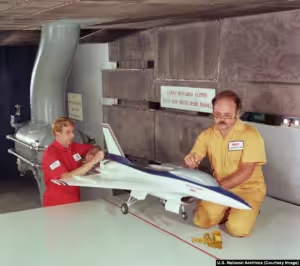As the world watches for the anticipated deployment of F-16 fighter jets over Ukraine, a seasoned pilot, Keith Rosenkranz, who has flown over 30 missions with these aircraft during the Gulf War, offers a stark warning to Ukrainian pilots gearing up to operate them. “It’s one thing to be on a training mission and drop a bomb on a harmless target, or to fight a different category helicopter in a staged scenario,” he explained in an interview. “It’s another thing to do all these when the enemy wants to kill you.”

Ukraine is expected to receive its first F-16s from the West in June or July, marking a significant shift in its aerial capabilities. These jets were designed post-Vietnam War to counteract the Soviet-made aircraft that had previously targeted heavy and slow American planes. The development of the F-16s was revolutionary, driven by a group of designers known as the “fighter mafia,” who prioritised lightness and agility over the then-prevailing philosophy of creating large, complex aircraft. The result was a lightweight, highly maneuverable jet considered one of the most successful fighter aircraft ever produced.
More than 4,600 F-16s have been built since their inception over 50 years ago, serving numerous militaries worldwide. Ukraine is now set to join this list, with the official designation of the F-16 being the “Fighting Falcon,” though many refer to it as the “Viper.”
Rosenkranz, who has authored a book about his experiences as an F-16 pilot, points out that Ukrainian pilots will initially be at a disadvantage against the Russians due to their lack of experience. “It will be extremely challenging for Ukrainian pilots to undertake air defense missions without mastering the aircraft,” he said. He noted that it took him 1,200 hours of training and over a year of non-combat drills before embarking on a combat mission. Even then, he acknowledged that his first mission was incredibly difficult.
“Russian air defence systems, such as the S-400, are highly capable. Their trained pilots will have an edge over Ukrainian pilots in F-16s who will have had little time to learn,” Rosenkranz said. He stressed that it would take at least a year for Ukrainian pilots to feel comfortable in the F-16s. “Even then, I can’t confidently say they will dominate against the Russian forces,” he added.
The F-16s were initially designed to down other aircraft, including those capable of firing 100 rounds of 20mm ammunition per second. However, considering the advanced radar and missile systems developed within the fourth generation of fighter jets, it is unlikely that Ukrainian pilots will engage in the intense dogfights seen in previous conflicts.
David Kern, a former pilot with thousands of hours in American fourth-generation fighter jets, shared his insights on the role of F-16s in Ukraine. Kern, who now trains pilots using the initial F-16 training system, believes that these American planes will be used to target Russian drones and cruise missiles, as well as “supply routes and any concentration of Russian forces.” He added, “I wouldn’t be surprised if the Ukrainians use the F-16s to carry the fight into Russia, conducting deep strikes to hit strategic targets.”
Ukraine expects 20 pilots to begin training and be ready for combat missions by the end of 2024. This figure is much lower than Kyiv had hoped, with reports indicating difficulties in finding necessary training facilities. Nonetheless, Ukraine has been promised 85 F-16s from NATO countries, including Denmark, Norway, Belgium, and the Netherlands.
The arrival of these aircraft is poised to have significant implications for the ongoing conflict. As Rosenkranz highlighted, the initial period will be challenging, with Ukrainian pilots needing substantial time to acclimate to the F-16s’ capabilities and to integrate them effectively into their operations. However, the introduction of these advanced jets will undoubtedly enhance Ukraine’s defensive and offensive capabilities, potentially shifting the balance in its favour.
Beyond the immediate military impact, this development is likely to influence broader geopolitical dynamics, particularly in the context of West-Russia relations. The provision of F-16s to Ukraine symbolises a deepening commitment by NATO countries to support Kyiv, which could exacerbate tensions with Russia. Moscow has already warned that supplying advanced weaponry to Ukraine is a provocative act that could lead to an escalation in the conflict.
In terms of security implications, the deployment of F-16s in Ukraine could trigger a stronger Russian military response, further intensifying the war. This escalation might not only prolong the conflict but also increase the risk of direct confrontations between NATO and Russian forces, raising the spectre of a broader war.
Moreover, the enhanced aerial capabilities provided by the F-16s could empower Ukraine to conduct more strategic and deep strikes within Russian territory, potentially disrupting supply lines and military infrastructure. Such actions might provoke significant retaliatory measures from Russia, creating a cycle of escalation that would be challenging to contain.
For Ukraine, the deployment of F-16s represents a critical enhancement of its defensive and offensive toolkit. These jets can serve as a flexible artillery system, capable of targeting a wide range of threats and potentially altering the dynamics on the battlefield. However, the true impact of these aircraft will depend on how quickly and effectively Ukrainian pilots can adapt to and master their new capabilities.
While the introduction of F-16s into the Ukrainian theater is a significant milestone, it also brings with it a host of challenges and risks. The move underscores the West’s commitment to bolstering Ukraine’s military capacity, but it also raises the stakes in an already volatile conflict. As Ukraine prepares to integrate these advanced jets into its arsenal, the world will be watching closely to see how this development shapes the future of the war and the broader geopolitical landscape.
Stay informed on European political tensions and armed conflicts with our unique magazine. Subscribe for exclusive insights into current affairs and ongoing global issues.

